The Orvis US Made Mirage Fly Reel: Review
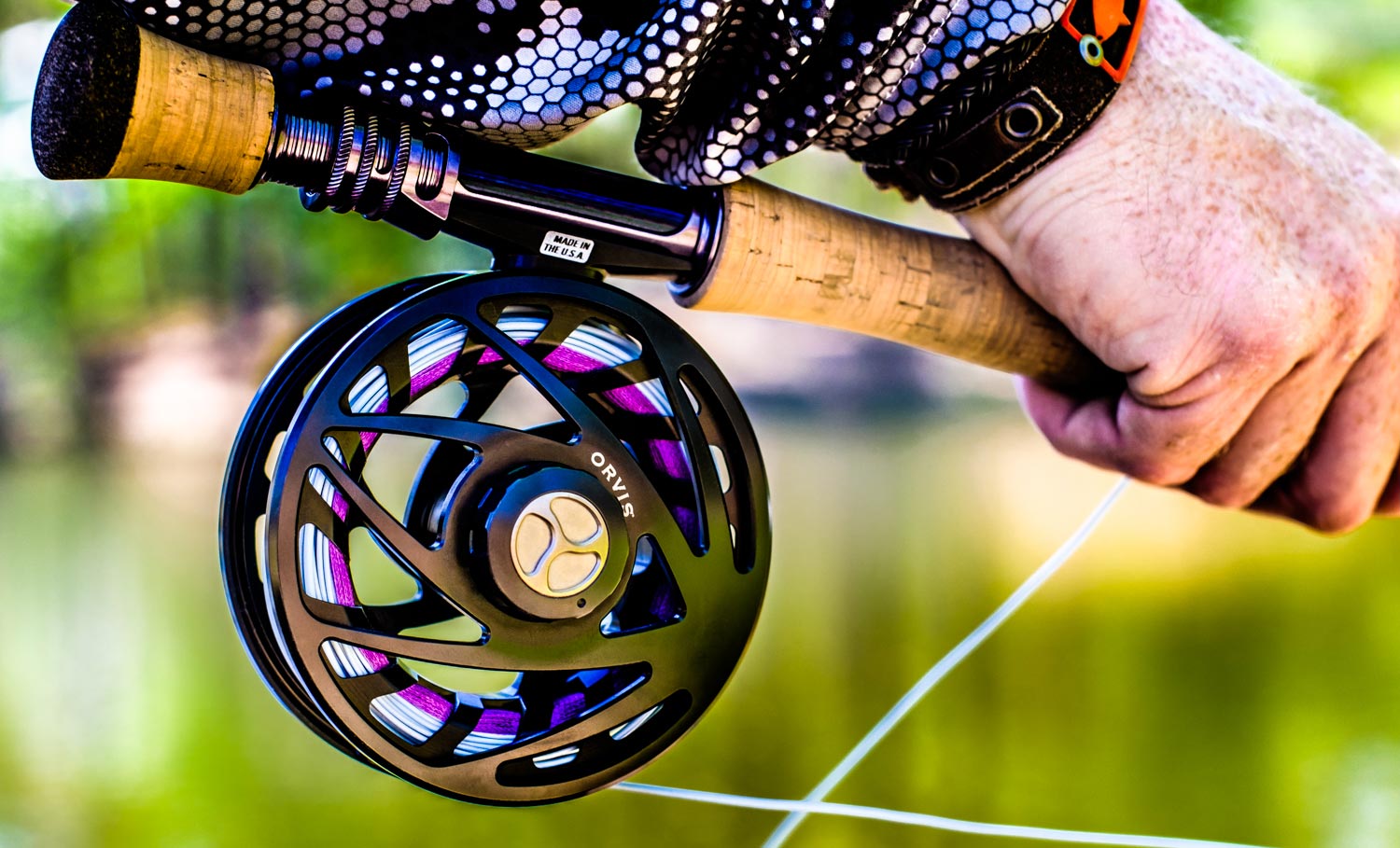
The USA-Made Mirage Makes Its Debut
It’s been a big push for some time now… Fly rods, reels, lines, gear, accessories, clothing; Anglers want more products made stateside, as opposed to the cheaper, foreign alternatives. This typically means a steeper price, but with that also comes a more reliable, quality product. And anglers have shown they are willing to pay the higher prices to get a better product. Thankfully, many companies within the fly fishing world have listened to their customers and made the necessary moves to get more USA-made gear into fly shops.
Photo Caption: (Orvis is one of those companies that is making a big push to manufacture more USA-made products in order to continue the tradition of providing some of the finest gear to fly anglers everywhere.)
The new Orvis Mirage hit the scene this past summer at IFTD and many that attended the show were impressed by the looks, features, and specifications that this new reel boasted. However, what I was most excited about was the fact that this reel was made 100% in the US of A. Finally!!! Orvis has been hand rolling some of the best rods on the planet right here in Vermont for decades, and now there is finally a high-performance reel, that is proudly made in Vermont, that will wear the Orvis name.
So what about this Made in USA Mirage is going to make it great?
At first look, the new Mirage
Read More »Sunday Classic / Stretch Thy Fly Line
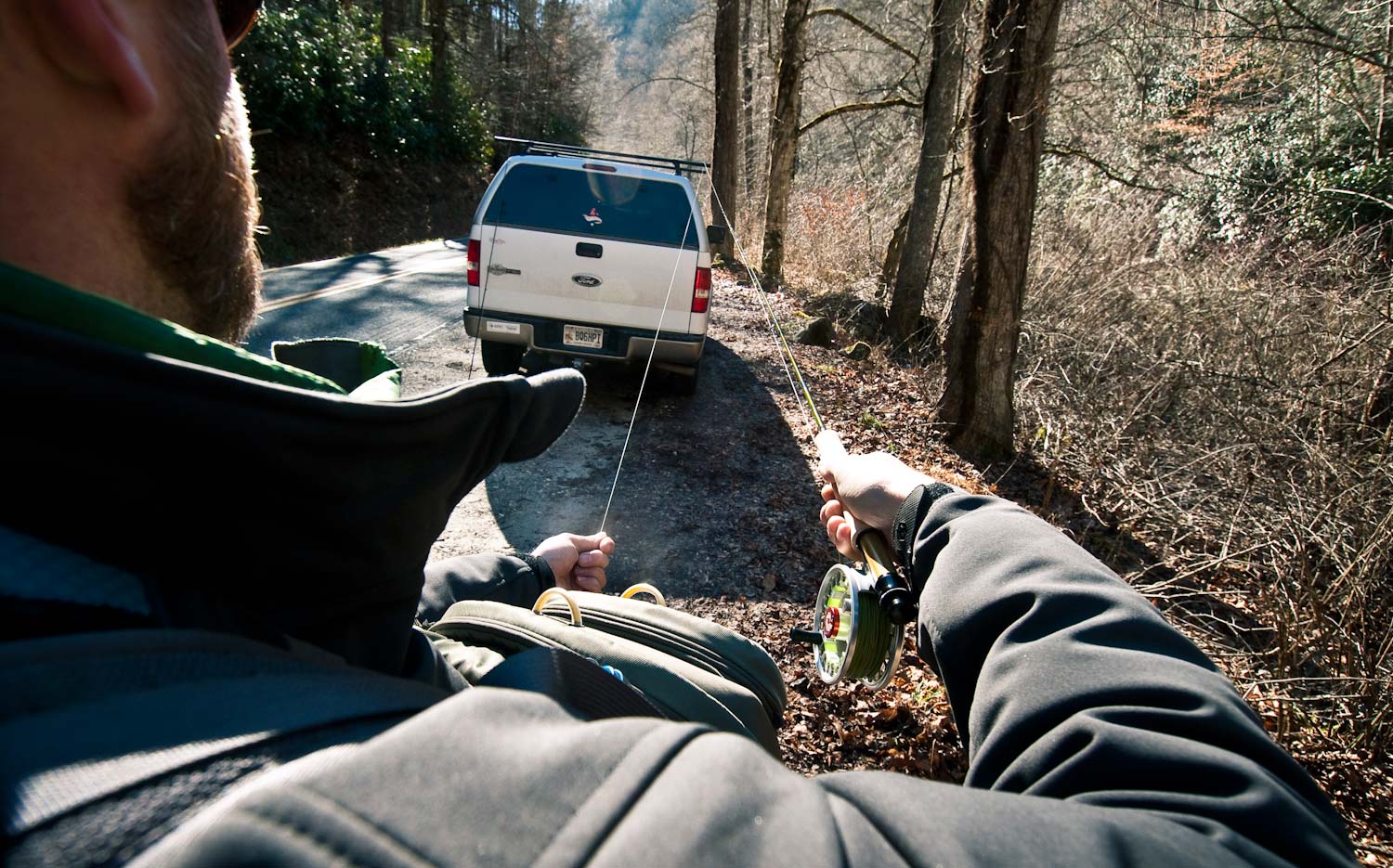
Are you looking for more a little more distance in your cast? Is your fly line not shooting through your guides as easy as it should? Is it lacking that fresh from the box high floating buoyancy? Are you spending more time untangling your fly line than fishing? If your answer to any of the above questions is yes, you should think about taking a couple minutes before hitting the water to stretch your fly line out.
Read More »Saturday Shoutout / Kharlovka
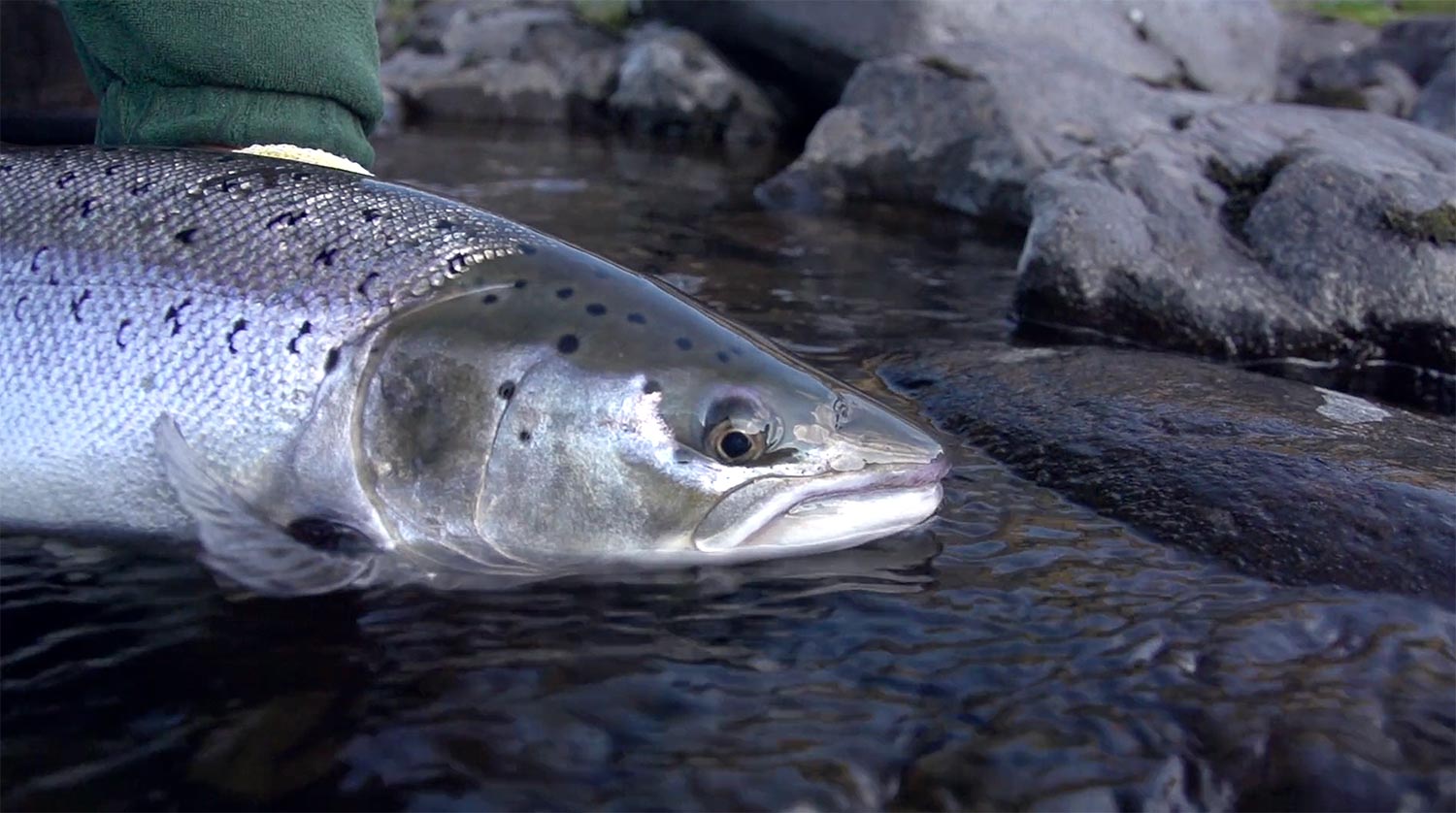
If you’ve ever dreamed of skating a fly for Atlantic Salmon, this film will make your heart pound.
Almost a mythical beast, the Atlantic Salmon excites anglers like no other species. With runs dwindling and the future of this fish in doubt, it’s wonderful to see steps being taken to preserve them and their habitat.
Take a trip to the Kharlovka Atlantic Salmon Preserve, with film maker jako Lucas, and get a gleams of the past, and if we are all very lucky, maybe the future.
ENJOY KHARLOVKA
Read More »Winter Steelhead, Consistency Is King
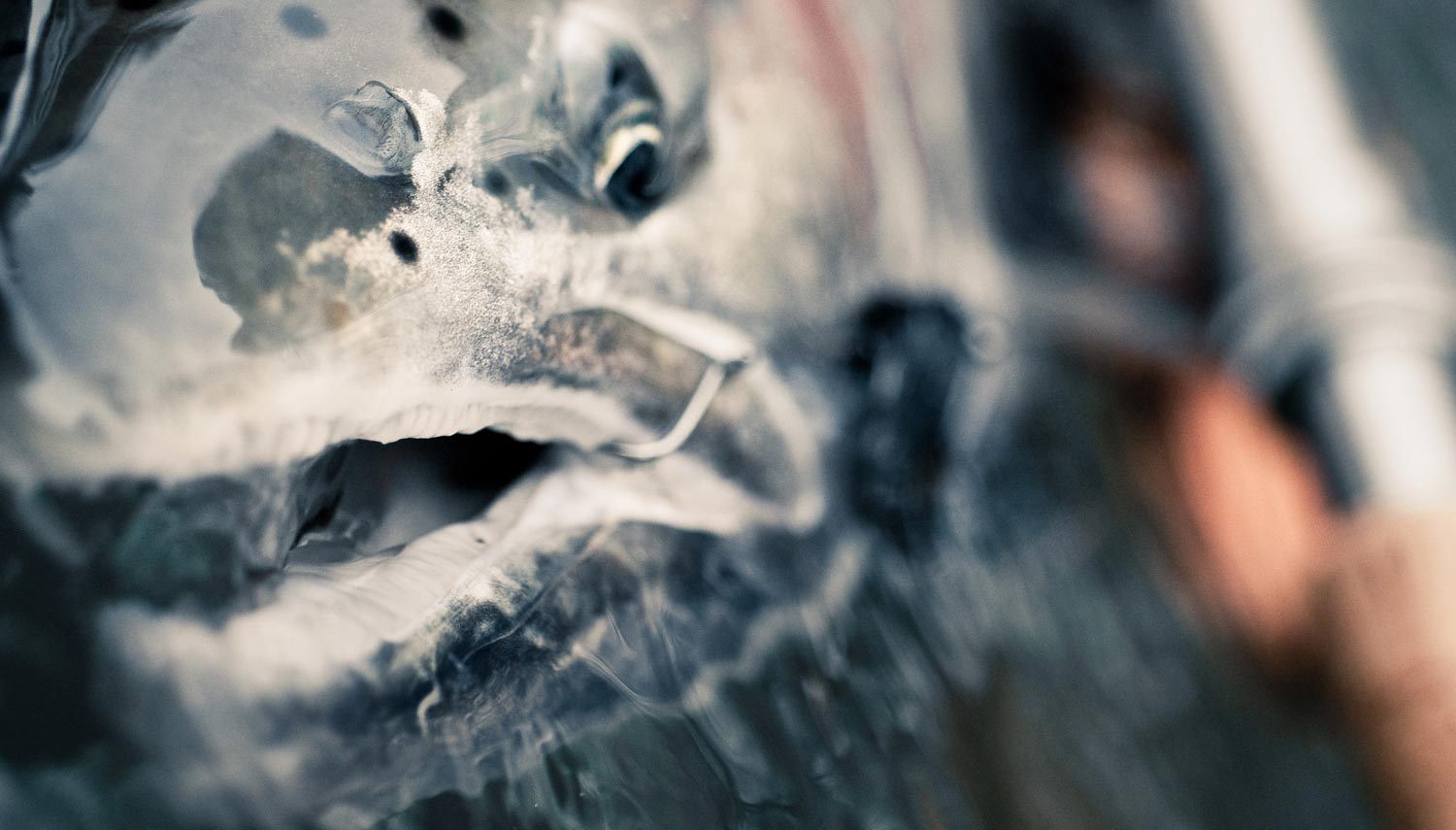
Let’s be honest, winter steelheading is a pretty tough game.
Summer runs can get downright giddy in comparison to the cold, dark days of winter. Swinging flies in tough conditions, for migrating fish whose numbers are small, when they are there at all, is just not for the faint of heart. Although the odds are slim, the rewards are great. There’s nothing like the feel of a heavy winter fish on the line.
In every fishing challenge, we try to stack the odds in our favor. To do that effectively, we must first understand why the fishing is challenging. In the case of winter steelhead, there are a couple of factors in play, which make or job harder than normal.
Winter fish are on a mission. All steelhead spawn at the same time. The timing of the runs is just when the fish enter the river. Summer fish come in early and hang out in the river, becoming more like trout in their habits. They have nothing to do but hang out and grab flies. Winter fish come in hot to spawn. Fish entering the river in March may only be in the river for a week or two. They have a sense of purpose and that purpose does not include eating flies.
All fish are less aggressive in cold water. Hanging out in 40 degree water doesn’t put any of us in the best mood. It’s the same for steelhead. You will simply get fewer eats from any given fish in cold water than in warmer water.
Of course the biggest reason that winter steelhead are so tough to catch is there are just fewer of them. Fewer every day, it seems. The fish who do make the winter run are covering a lot of water quickly, so any time you are swinging the fly in winter you have to wonder if there are even fish to see it. Well, don’t give up. The fish are there and I’m going to give you a tip on how to catch them.
CONSISTENCY IS KING.
Swinging flies for winter steelhead is all about covering water effectively. It’s not just a matter of
Read More »4 Tips to Get You Roll Casting Like a Pro
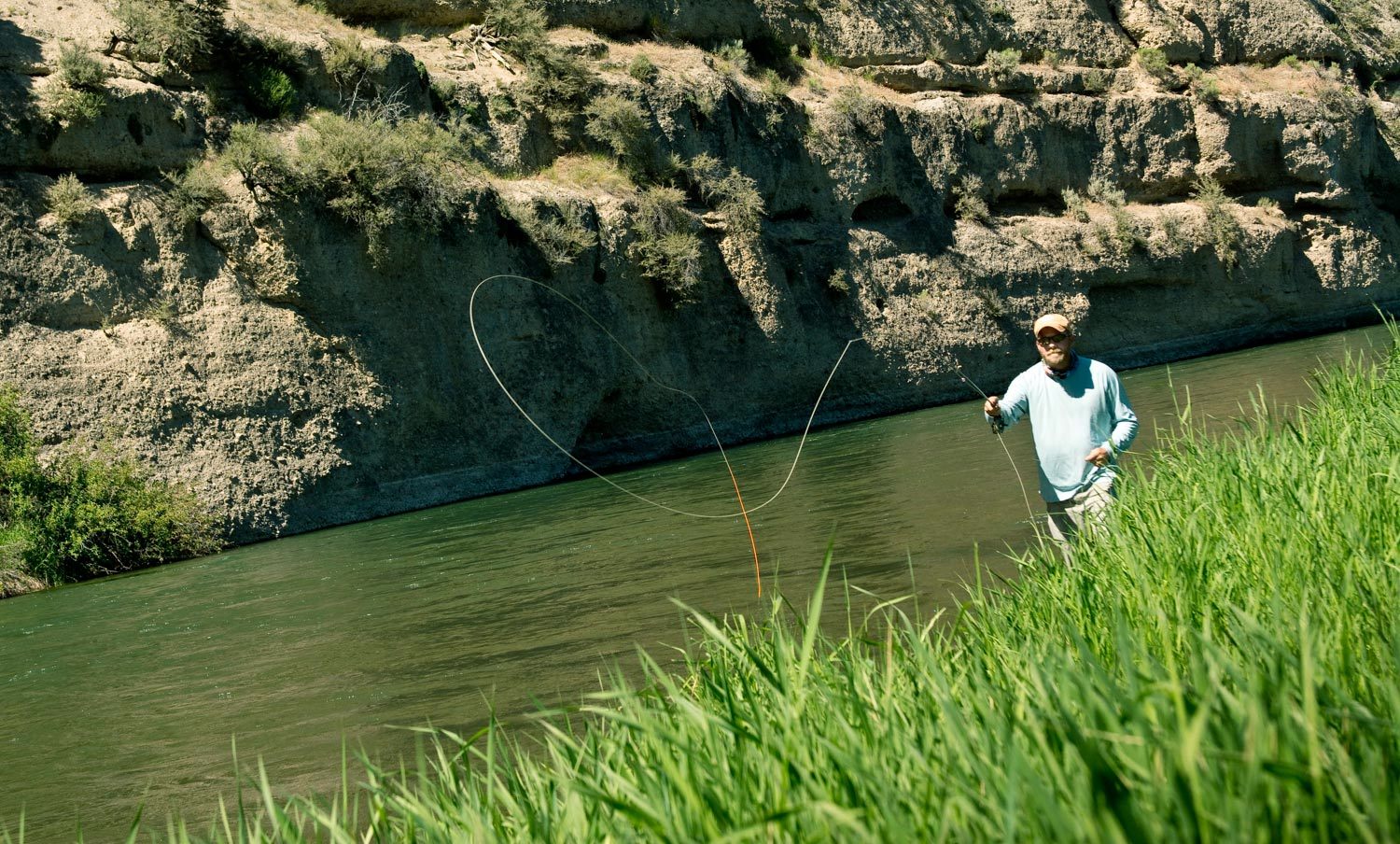
You’ve just spotted a big head break the surface on the far bank, gulping down a struggling mayfly drifting in the foam. The excitement of discovering the trophy trout feeding triggers your body’s adrenaline glands, and almost instantly, you feel your heart begin to pound, thump thump….thump thump. With the confined quarters and lacking room for a back cast, you realize your only viable option to reach the fish is going to be with an accurate roll cast. As you quickly try to present your mayfly imitation in the feeding lane, hoping that the big fish will mistake it for a natural, your fly shoots left of your intended target and lands in an overhanging branch above the fish’s lie, immediately putting down the big fish. With the fishing opportunity blown and the disappointment setting in, you find yourself asking, “What did I do wrong?”
As an avid small stream trout fisherman, I’ve lived out this exact situation many times, and felt the disappointment followed by a poorly executed roll cast. It wasn’t until I took the time to understand and learn the mechanics of proper roll casting, that I began finding myself capitalizing on fishing situations that called for precise roll casting. Looking back now on my past roll casting insufficiency, it’s clear I wasn’t at all, alone. There’s many anglers that struggle with roll casting, and that’s why I’ve decided to provide a short list of tips that’s intended to get anglers roll casting like pros.
Read More »The Deschutes River Steelhead Camp, Sept 11-20, 2017
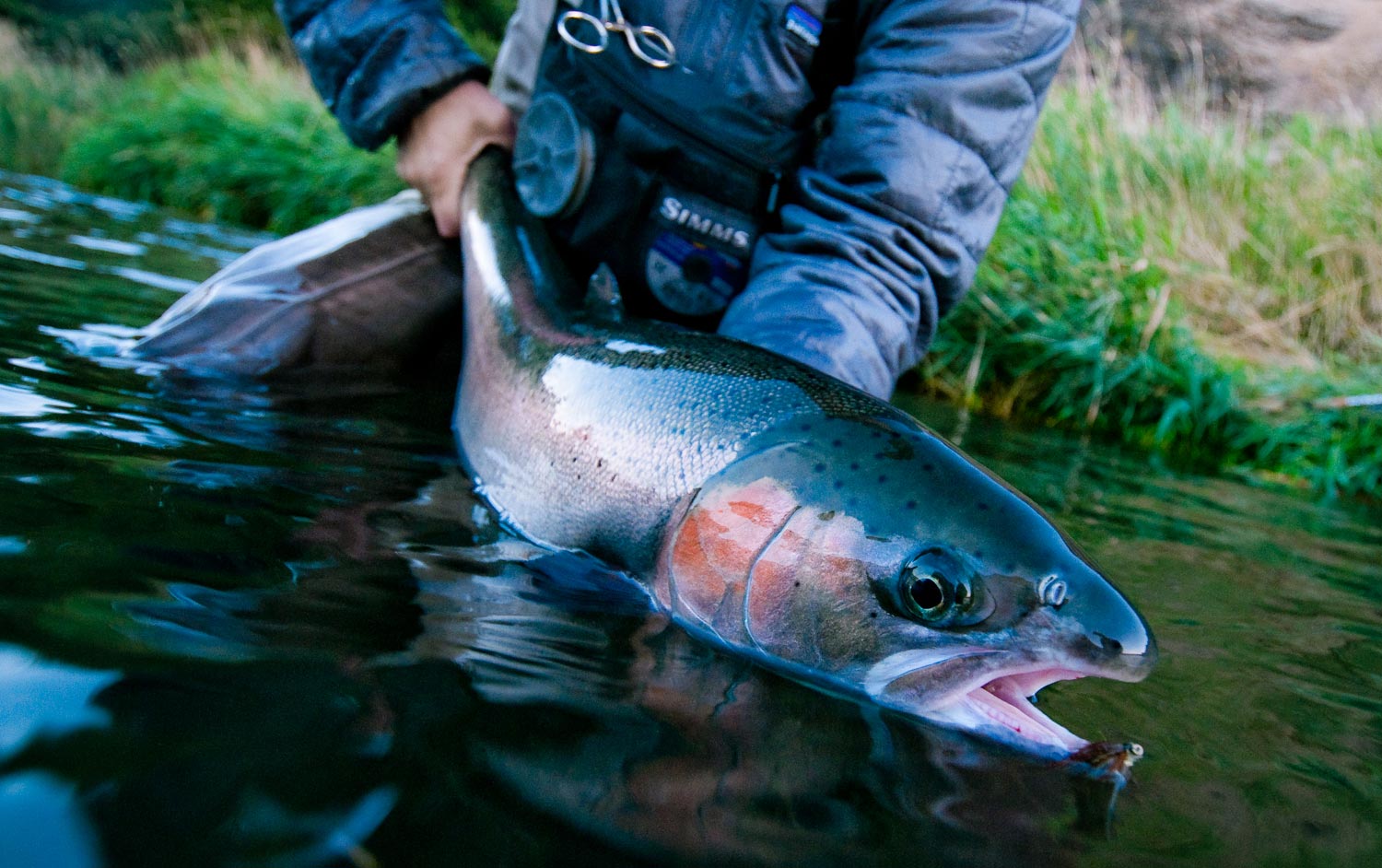
The Deschutes Steelhead Camp, operated by Jeff Hickman’s Fish The Swing, is one of our most popular trips and many anglers return year after year.
In order to accommodate more anglers we are excited to be extending this year’s trip with an additional group. The trip is broken into 3 groups fishing Sept 11-14, Sept 14-17 & Sept 17-20. You could choose to join us for 3, 6 or all 9 days. The cost for each 3 day session is $2200 and includes guided fishing, instruction, lodging and chef-prepared meals.
The Deschutes steelhead camp is a blast. Jeff’s operations, both here in the states and at his lodge in BC, have a fun mellow vibe. Just good times and good fishing, no attitude or pressure. The Deschutes is a beautiful river and has a fantastic steelhead run. We fish the lower river. The Deschutes is a major cold water tributary of the mid-Columbia, so steelhead bound for all of the rivers of the upper system stray into the lower Deschutes to take advantage of the cool oxygen rich water. You have a chance to catch steelhead that are headed for Idaho there.
The Deschutes is one of the best rivers anywhere to catch a steelhead on a floating line. Casting a dry line is a real pleasure, but when a big steelhead rockets up through eight feet of fast water to eat a small traditional fly, it’s anything but relaxing. The steep canyon walls offer us plenty of shaded water through the day to take advantage of the dry line bite, and even wake dry flies. It’s super fun fishing!
We run up river in jet boats to the campsite and use that as our base. There are only a few outfitters licensed to run jet boats on the river. The jets give us the ability to access fresh water any time we like, which is huge. After we get settled in at camp and have a bite to eat, we hit the river and fish until dark. The next two days we start fishing before first light and fish until lunch. We return to camp for a hot lunch and a big nap, then head back out in the afternoon as the shadows fall on the river and fish until dark. Then we have a big dinner (the food is awesome) maybe a drink or two, and hit the sack. The last day we fish until lunch and head back to the boat ramp.
Jeff and his crew set the camp in advance. You arrive to a big stand-up tent with cots and sleeping pads. All you need to bring is a sleeping bag and pillow. There is a screened dining tent, a tent with a camp toilet and a shower tent. There is electricity from a bank of solar cells and batteries. It’s ridiculously nice. There are also ample public composting toilets along the river if you prefer those.
The river is beautiful and the stars at night are amazing. You can see the milky way clear as a bell. The water is beautiful. There are great steelhead runs everywhere you look and dramatic rapids. It’s fishing
Read More »Sunday Classic / Gary Merriman Ties The Tarpon Toad
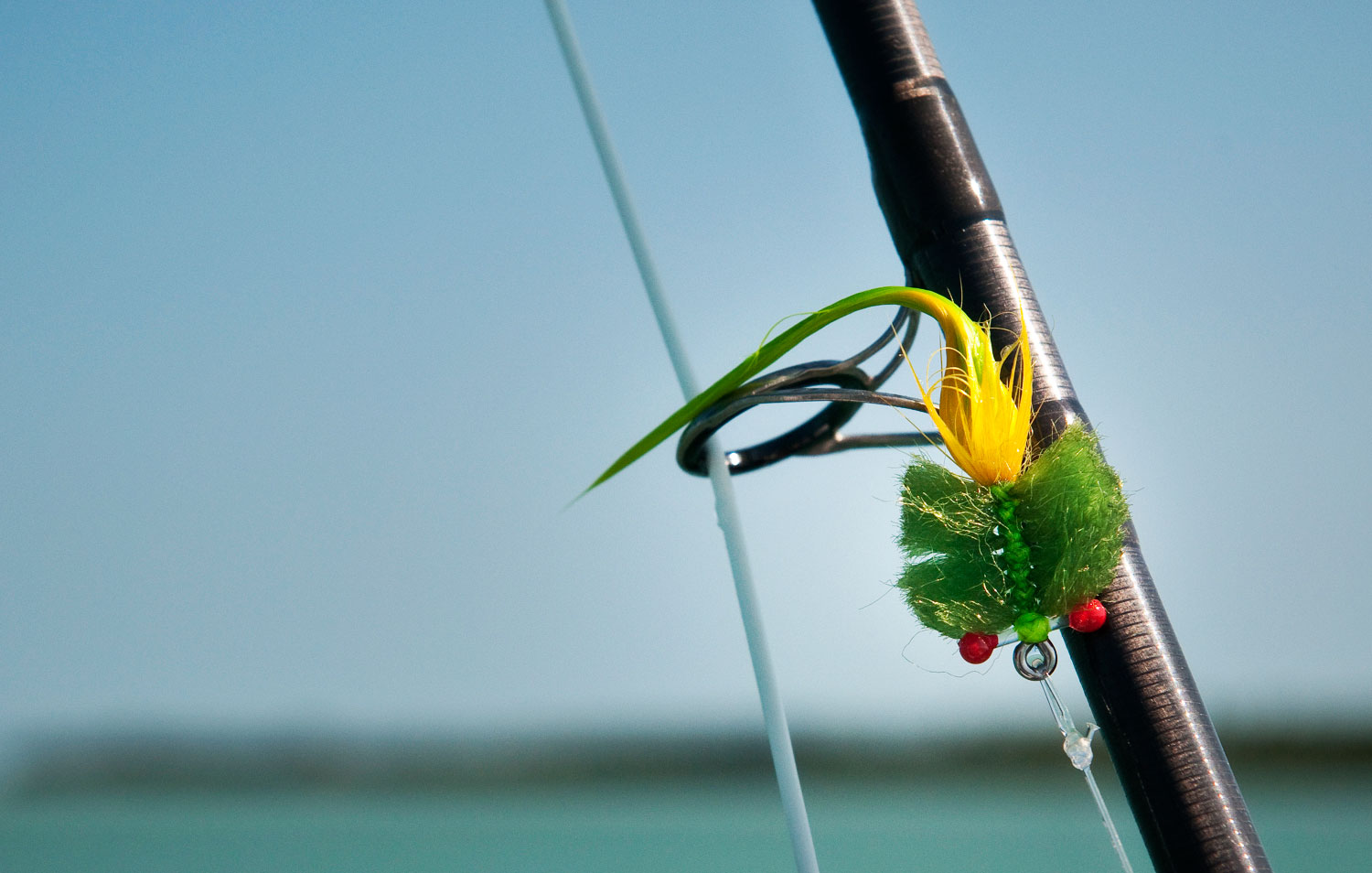
I’VE KNOWN GARY MERRIMAN FOR OVER TWENTY YEARS AND ONLY FOUND OUT ABOUT A YEAR AGO THAT HE WAS THE CREATOR OF THE TARPON TOAD.
Read More »Saturday Shoutout / Simon Says Streamers
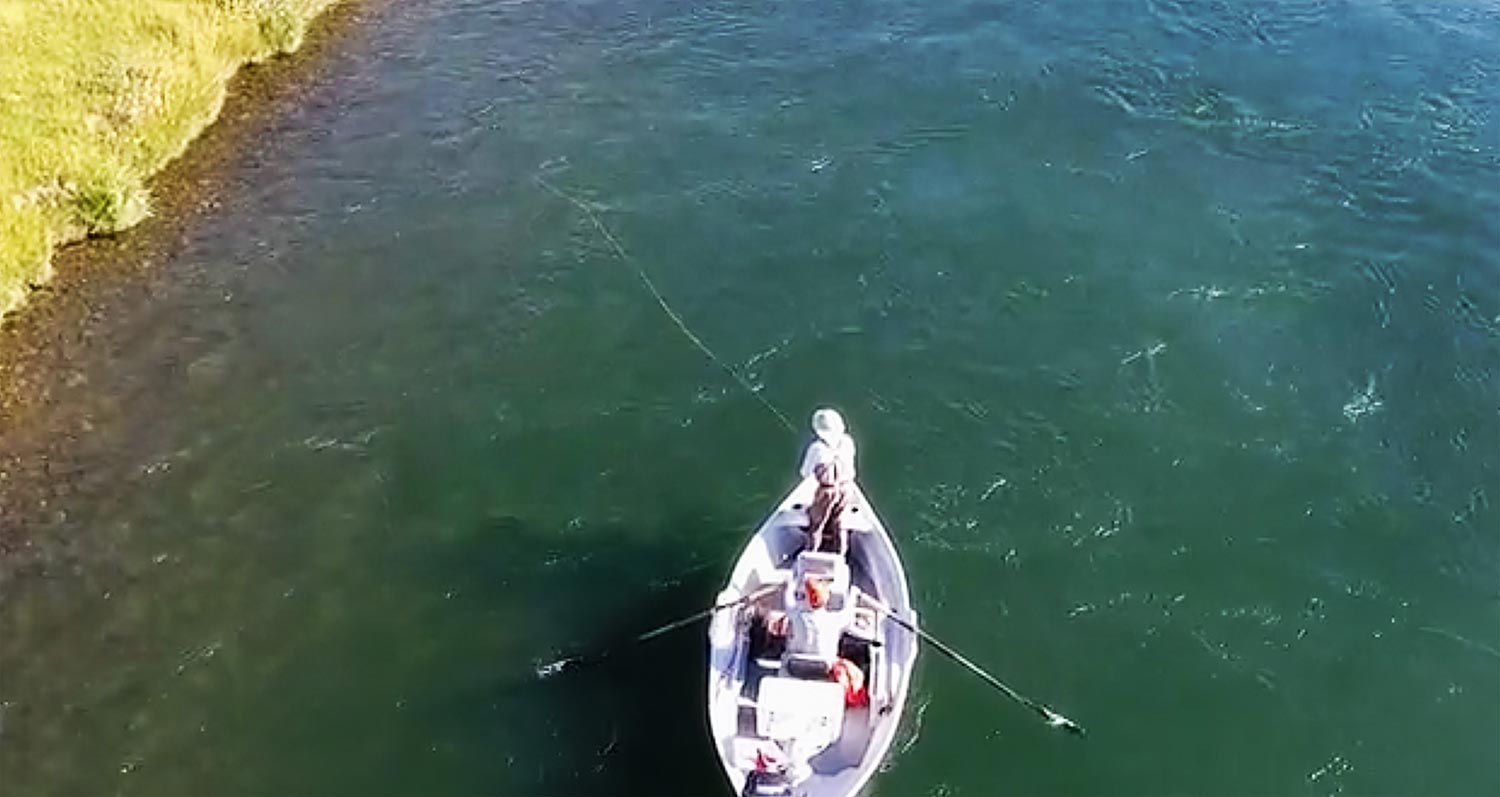
Here’s an excellent streamer tutorial from Simon Gawesworth.
This video, part of RIO’s “How To” series, features two of my favorite people. Simon Gawesworth and Rob “Silent Bob” Parkins throw streamers on the South Fork and Simon does an excellent job imparting serious wisdom.
Simon covers virtually every technique you need to be a successful meat chucker. If you’re looking to up your streamer game, this is a great place to start.
WATCH THIS VIDEO AND LEARN TO FISH STREAMERS.
Read More »Strike Indicators, What Matters to Me
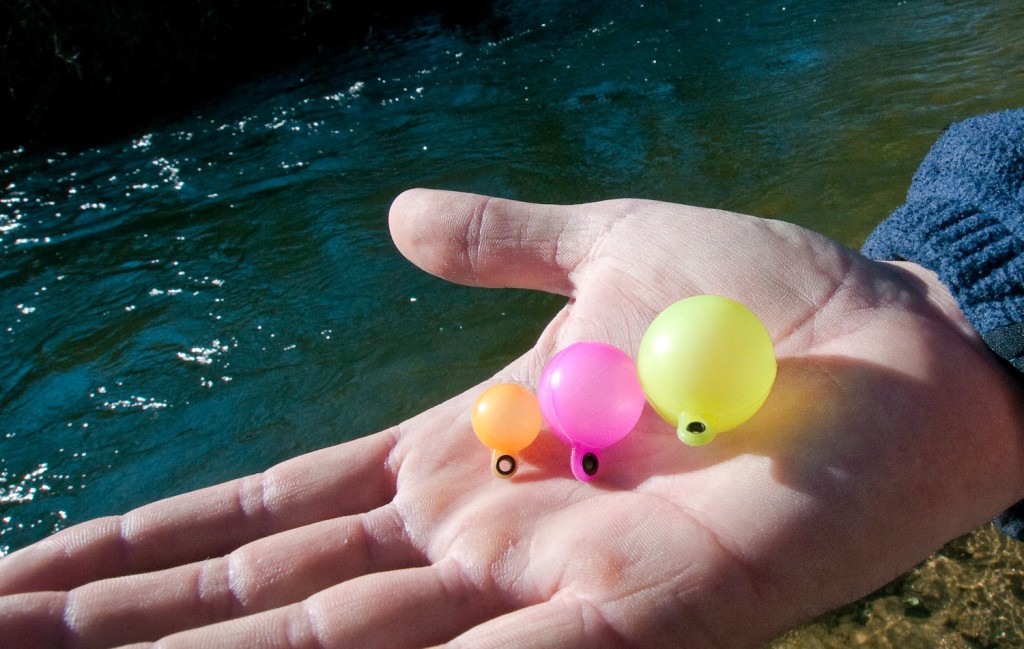
DO STRIKE INDICATORS SPOOK FISH?
There is a lot of debate over whether strike indicators spook fish. I’m not going to beat around the bush on this one folks. I truly believe that most of the time they don’t. Especially if you rule out calm and slow moving shallow water. Only when I’m dealing with really spooky fish, do I downsize and dull down the color of my strike indicators. The other 80% of the time I think the fish pretty much just find them interesting, possibly a tasty morsel, or just another piece of trash floating over their heads.
What I really think we should be doing is looking at the other side of the coin. In my opinion, we should worry less about spooking fish with our indicators, and worry more about matching the correct size strike indicator to the type of water and rig we’re fishing. That makes much more sense to me, anyway. Now I know there’s lots of you probably saying this is obvious rookie stuff, Kent. I hear you all loud and clear, but bare with me a minute, because I still find myself having to explain to anglers why it’s a good idea to carry different sizes and colors of strike indicators on the water. And as long as I’m doing that, there’s a need for this information to be out there for people to read.
HERE’S HOW I GO ABOUT CHOOSING WHAT STRIKE INDICATORS I USE ON THE WATER.
I Fish Big Bright Indicators For: High Turbulent Water, Harsh Glare, Big Heavy Flies & Split-Shot
It doesn’t make any sense to use a strike indicator that’s too small to stay afloat in turbulent water. Some will argue with me on this, but I believe it’s much easier to see strikes when the indicator is above the surface, not below it. Same goes for harsh glare conditions. If you can’t see your indicator how are you going to be able to see the strikes? Upsize your strike indicator and change to a bright color if needed. Lastly, when you’re going to be fishing big heavy flies or lots of split-shot, you’ll need to go bigger with your indicator to keep it afloat. It’s also important to remember that strike indicators aren’t just used for seeing strikes. We also use them to control and maintain the depth at which we want our flies drifting.
I Fish Small Dull Colored Indicators For
Read More »Sunday Classic / Streamer Retrieves For Different Current Speeds
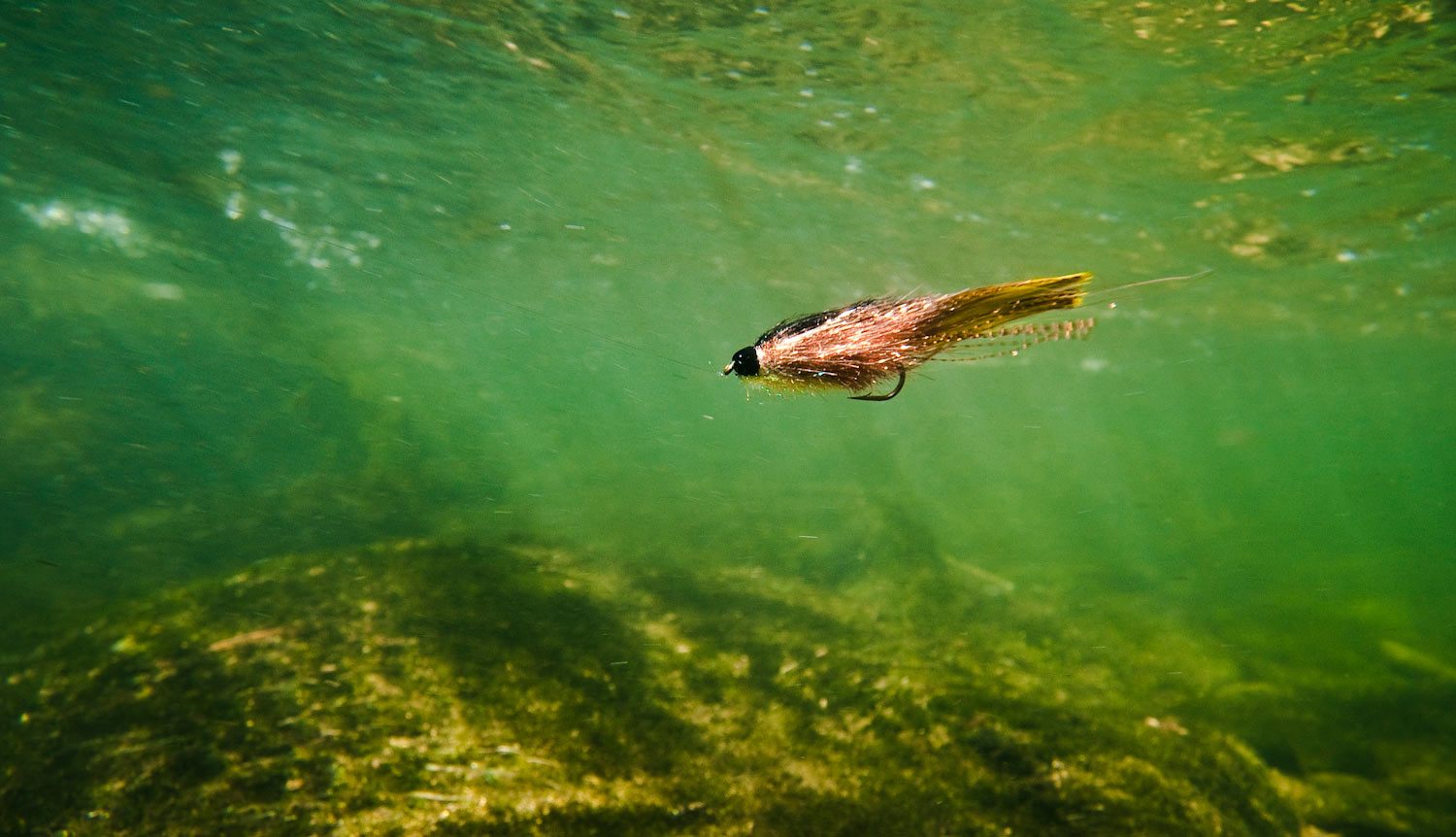
I’ve talked in great detail about streamer fishing since I began writing articles for Gink & Gasoline. Most of my time has been spent talking about color and pattern choice, streamer gear/rigging for both big and small water and how to locate and target prime trout water with streamers. One area of streamer fishing I’ve yet to talk about in detail is retrieve speed and candor with streamers.
Read More »